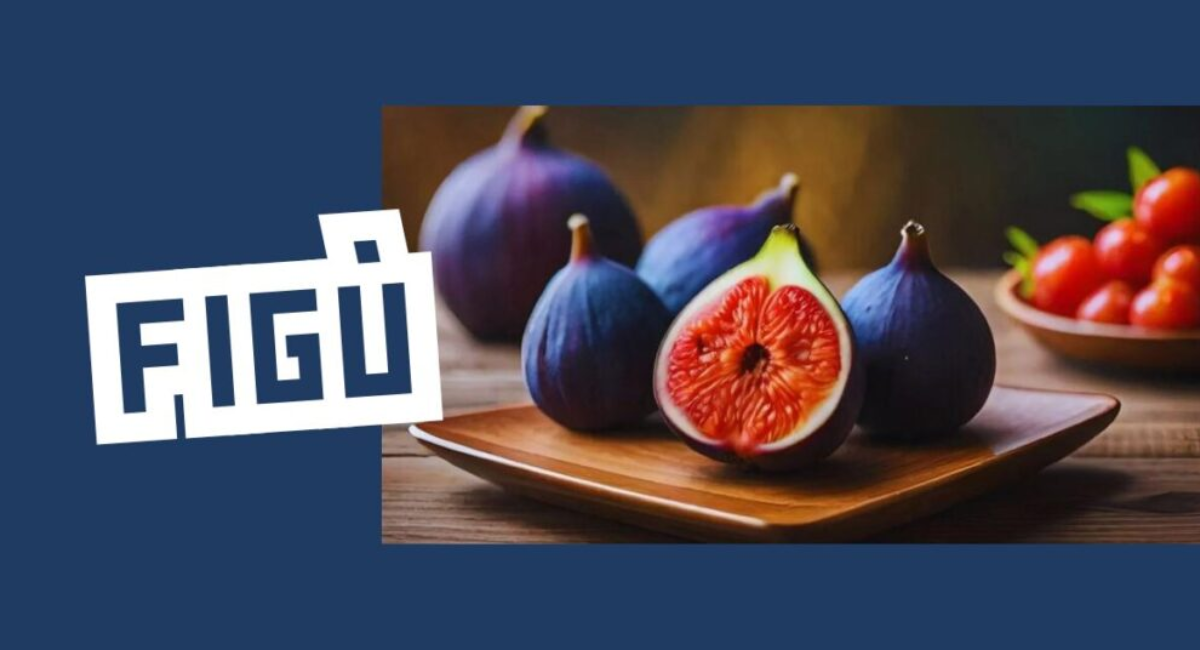Figs, or Figù, are more than just tasty fruits. They hold a rich history and culture. Figs are loved today for cooking, but they have enjoyed themselves since ancient Mediterranean societies. Try some figù in the kitchen today.
In this article, we will look at what Figù means, its cultural significance, and the health benefits it offers. Let’s find out how figs can improve your life and help you connect to a great heritage.
What is Figù?
The fruit of a fig is named as Figù. It originated from Ficus carica, which is otherwise called a fig tree. The fruits are usually small, sweet, and intensely nutritious. They are among the oldest fruits cultivated.
The word “Figù” has origins in the Latin word ficus. The tree comes from the Mediterranean and the Middle East. Figs have an excellent texture and flavor. They may be eaten fresh or dry. People use them mostly in salads, desserts, or jams.
Figs have an even deeper cultural aspect. They symbolize abundance and richness. In the Mediterranean, this fruit is mainly used in harvesting festivals. Presences of fresh figs are believed to ward off evil spirits in Mediterranean lands, and the fruit has long been associated with intelligence in the olden days and appeared in myths.
Figù is of importance nowadays because it holds a kind of line of tradition. And health can be achieved through figs because the fruits are rich in fiber, vitamins, and antioxidants, which also contribute to an overall well-being.
The Origins and Definition of Figù
A Latin word, Ficus, is a name referring to a fig tree. Figs have been bred for over 3000 years. Figs have been in existence as fruits since ancient times. They originated from the Mediterranean region and the Middle East.
The fig tree grows in warm climates. It produces delicious, juicy fruits that have various colors. There are green, purple, or brown figs. The fruit boasts a peculiar texture with hardy skin and soft, crumbly inside, with seeds.
Figs played a huge role in the olden times due to their role in ancient diets. It was a staple food for most cultures. Figs were even used by the ancient Egyptians as part of their rituals. Greeks and Romans regarded figs as sweet and nutritious.
Figs have deep cultural roots. They symbolize prosperity and abundance. In many cultures, they are associated with fertility and good fortune. The fig tree itself is often seen as a symbol of peace.
Cultural Importance of Figù Around the World

Figù is a fruit with strong cultural significance across many cultures. In the Mediterranean, for example, figs are traditionally connotated as symbols of abundance and fertility; thus, they usually always feature in the festivities of harvest celebrations to honor the prolific earth. Such celebrations underscore the fig’s function as sustenance to communities and as a link between communities and their agricultural past.
In ancient Greece, figs were highly valued and considered a gift from the gods. They represented wisdom and appeared in various myths. Greek athletes consumed figs for strength and energy, showcasing their significance in both daily life and sports.
Ancient Egyptians also recognized the value of figs, using them in religious rituals. Figs represented prosperity and were included in offerings to the gods. This connection highlighted their importance in health and fertility within Egyptian culture.
In many Asian cultures, figs carry spiritual significance. They are used in offerings to show respect and gratitude, symbolizing good fortune and longevity. This reverence reflects a deep appreciation for the fruit’s benefits beyond nutrition.
Figs continue to be celebrated for their flavor and health benefits in contemporary society. They are commonly found in traditional dishes and modern recipes alike. Figs enhance desserts, salads, and snacks, proving their versatility and enduring appeal.
The Benefits of Figù
Figs are globally beloved fruits with humble physical appearances but enormous contributions in their health benefits making them so important for any structure of food. They are small fruits that are full of energy to enhance one’s health. Figs are rich in nutritional and health benefits and Figù has much to offer.
1. Nutritional Benefits
There is a variety of nutrients found in figs. Dietary fiber is present in high amounts and is one of the health foods. One medium-sized fig delivers a sufficient amount of 1.4 grams of diet fibers, which are good for the intestines and the prevention of constipation.
Further, figs are high in vitamins and minerals. Vitamin B6, which helps the brain is found in figs and so also is vitamin K which is a bone vitamin. On top of that, figs also contain ample levels of potassium which is good for the heart and controlling blood pressure.
2. Health Benefits
The health advantages that figs provide are a very high reason why figs should be included in any form of nutrition. This is because they have a wonderful array of nutrients that enhance the functioning of different systems of the body and help to maintain good health.
Nutritional Value of Figù
While figs have a very low caloric density, their vitamin and mineral content is highly rich. In terms of fresh figs, one serving contains enough dietary fiber as well as the benefits of good digestion and maintenance of a healthy gut. Vision-friendly fruits such as vitamin A and vitamin K which are associated with blood clotting and bone health are also found in them.
Furthermore, figs consist of valuable elements including potassium, magnesium as well as calcium. Blood pressure levels are managed by potassium, while magnesium is a testosterone muscle energy-creating and muscle-controlling mineral.
Apart from the above advantages, human beings can obtain photochemical such as polyphenols from figs. This family of compounds possesses an ant oxidative effect that protects the body from overexertion from oxidative factors and hence controls the onset of chronic diseases. The natural sugars in the figs facilitate energy regeneration immediately making them a suitable substitute for snacks.
Figù and Its Role in Traditional Medicine
Figs have traditionally, instead of medicine been in use for a long time. Different cultures have found the use of figs useful concerning the digestive system. They have much fiber in it so constipation will not cause a problem, and properly timed bowel movement will not be a cause of trouble either.
Figs are famously used in herbal medicine for respiratory problems. The use of figs can minimize the inflammation, particularly due to the soothing sore throat as well as the easing of coughing. Natural remedies other than for skin troubles are due to their soothing as well as moisturizing effects.
Actually, some cultures have believed that figs have been heart-friendly as cholesterol levels may reduce within the body. Because this fruit contains omega-3 and omega-6 fatty acids, which keep the heart fit, there is no reason to deny these benefits.
Scientific Studies Supporting Figù’s Health Benefits
Research has shown that figs provide several health benefits, supported by scientific studies. One study found that the high fiber content in figs can improve digestive health. Participants who consumed figs experienced less constipation and improved overall gut function.
Antioxidant properties were also attributed to the consumption of figs in another study. Antioxidants are those that fight oxidative stress thus have been associated with chronic diseases like heart disease and diabetes. The phenolic compounds have shown reduction of inflammation hence facilitate heart health.
Scientific research has proven that figs are meant to regulate blood sugar levels. In one study on figs, it was determined that the natural sugars found in the figs and the fiber can help stabilize the glucose level. Therefore, in diabetes management, it is good to use them.
3. Psychological Benefits
Figs have many psychological benefits to ensure total well-being. Eating figs may inspire positive feelings and nostalgia. Often, it was pictured as a gathering of family, for instance, unique traditions of certain cultures and celebrations with family shared over meals. Such association with food incites feelings of belonging and nostalgia.
Fresh consumption of figs can also brighten up someone’s mood. The natural sugars in the fruit build up fast energy, and thus help someone to seem happier. Additionally, people take time to savor figs, feel their texture, and taste their flavor. Food mindfulness generally makes people enjoy their moment better while taking time for eating.
Fig is included as part of everyday daily consumption, which makes it easier to maintain good eating habits. People consuming healthy foods like figs feel great about the diet. This may lead to a better body image and further health control.
How to Use “Figù” in Everyday Language?
Incorporating the term “Figù” into everyday conversations can add depth and cultural relevance. Here are some practical ways to use it:
Metaphorical Expressions: Use “Figù” to symbolize abundance or prosperity. For instance, you might say, “Her success in the project was a true Figù for the team,” suggesting that it brought great benefits.
Culinary Conversations: When discussing food, ask questions like, “Have you tried using Figù in your recipes?” This can spark interest in figs and their culinary uses.
Cultural Discussions: In conversations about traditions, you can say, “Figs have a special place in many cultures, representing Figù.” This highlights their cultural significance.
Health and Wellness Talks: In discussions about nutrition, mention, “Incorporating Figù into your diet can enhance your health.” This reinforces the health benefits of figs.
Social Media Posts: Use “Figù” in captions or hashtags to connect with food and culture enthusiasts. For example, “Exploring the Figù of different cuisines today!”
Storytelling: Share personal anecdotes involving figs. For instance, “Growing up, we always had figs during the harvest season. It felt like a Figù in our home.”
How to Download and Use the Figù App: A step by step Guide
Downloading and using the Figù app is a simple process that can enhance your experience with this versatile fruit. Here is everything you need to do to start exploring the app:
Step 1: Download the App
From Your App Store, go to Google Play Store for Android or to the Apple App Store for iOS.
Search for “Figù”: Type “Figù” in the search bar and look for the official app.
Install the App: Click/tap the Download/Install button. Wait for that app to download and install on your device.
Step 2: Create an Account
- Open the App: Tap on the Figù app icon to launch it.
- Sign Up: Choose to create a new account. You can sign up using your email address or social media accounts.
- Fill Your Details: Enter information that includes both your name and your password, and then accept the terms and conditions by clicking the “Submit” button.
Step 3: Explore the Features
- Home Screen: Get familiar with the layout of the home screen. It usually features sections like recipes, health tips, and cultural insights related to Figù.
- Navigation Menu: Use the navigation menu to explore different categories. This may include sections for nutrition, cooking, and community discussions.
Step 4: Customize Your Experience
- Profile Settings: Go to your profile settings to customize your preferences. Adjust notification settings and select content types that interest you.
- Connect with Friends: If the app allows, connect with friends or family to share recipes and tips. This can enhance your experience and foster community engagement.
Step 5: Engage with the Community
- Join Discussions: Participate in community forums to share your experiences with Figù. Ask questions and learn from others.
- Share Your Recipes: Post your favorite fig recipes or culinary creations. Engaging with the community can provide inspiration and new ideas.
Step 6: Enjoy Figù!
- Test the recipes in the app: Use figs in salads, desserts, and savory dishes.
- Learn About Health Benefits: Read articles and tips on how to live their best lives by introducing Figù into their diet.
By following these steps, you can easily download and navigate the Figù app, making the most of its resources and connecting with others who share your passion for this delightful fruit. Enjoy discovering the many ways Figù can enrich your culinary and cultural experiences!
Figù in Different Cultures

Figs happen to be an integral symbol in most cultures around the globe. In most cultures and societies, it seems to be something that is shared, consumed, and part of a tradition. Their history combined with its multifaceted application explains why it has become a much-loved part of people’s culture.
Figù in Traditional Practices
In many cultures, figs represent entrenched practices deep-rooted in traditions. Within the Mediterranean world, they are interlinked with harvest festivals symbolizing wealth and prosperity. People assemble to worship the fig tree because their income is directly from agriculture.
In ancient Greece, figs were considered sacred and linked to the gods. They frequently featured in rituals and offerings, representing wisdom. Athletes consumed figs for strength, highlighting their cultural significance. Similarly, in Middle Eastern cultures, figs are included in religious ceremonies, symbolizing blessings and gratitude.
Asian traditions also incorporate figs in spiritual practices. During festivals, they are offered to honor ancestors and seek good fortune. This reflects the fig’s role as a symbol of respect and reverence.
Figù in Modern Society and Its Uses
Today, figs thrive in modern culture. Their versatility has made them in vogue for use in modern cuisine. Figs are found in mouthwatering recipes, from gourmet salads to artisanal cheeses. They appear in desserts, jams, and even cocktails.
With increased health consciousness, nuts are valued for their nutritional properties. The incorporation of figs in diets is on the rise because of their high fiber and vitamins and high antioxidants. Figs are among the most favored snacks for natural and healthy food options.
Figs are also high among the trends in food, including vegan diets and haute cuisine. This fruit has a taste and texture that attract chefs and housewives alike in their kitchens. Social media has also highlighted figs, as many home cooks share various recipes and even ideas on how to serve dishes.
How to Incorporate Figù into Your Lifestyle
Figs are a delicious fruit that can easily spice up your daily routine since if you are a lover of flavors, there are so many mouthwatering recipes for you, while if you wish to include healthiness in your diet, you will see numerous healthy dietary plans for it.
Recipes Featuring Figù
- Fig and Goat Cheese Salad: Combine fresh figs with mixed greens, crumbled goat cheese, walnuts, and a light balsamic vinaigrette. This salad offers a delightful balance of flavors and textures.
- Stuffed Figs: Halve fresh figs and fill them with cream cheese or mascarpone. Top with a drizzle of honey and a sprinkle of chopped nuts for an elegant appetizer.
- Fig Smoothie: Blend fresh or dried figs with yogurt, a banana, and a splash of almond milk. This smoothie is packed with nutrients and makes for a quick, healthy breakfast.
- Fig Jam: Cook down figs with sugar, lemon juice, and spices to create a homemade jam. Spread it on toast, use it as a topping for desserts, or pair it with cheese for a tasty snack.
- Roasted Figs: Toss figs with olive oil and a pinch of salt, then roast them until caramelized. Serve as a side dish or atop grilled meats for added flavor.
Final Thoughts
Figs are a fruit beyond taste but symbolically wholesome because they hint at culture and tradition in the sense of health. Their history runs with the histories of various civilizations, with their versatility giving them a place in modern diets. Be their benefits either in the nutritional value that they provide or in the satisfaction from creating something new in the culinary sphere, life is not the same without figs.
Having figù in the diet can be quite enjoyable and nourishing. Eating them in a salad, blending them in a smoothie, or sharing them at a party can connect us to our heritage and wellness.
Explore the ways to enjoy figs, and discuss the cultural and health benefits of embracing this fruit in the diversity of recipes and dietary plans. Let Figù enrich your lifestyle by presenting the uniqueness of this fruit not only to nourish your body but also to commemorate the timeless legacy of figs in our world.
FAQs About Figù
1. What are figs?
Figs are sweet fruits that grow on fig trees. They can be eaten fresh or dried. Figs are known for their unique flavor and chewy texture.
2. What are the health benefits of figs?
Figs are rich in fiber, which aids digestion. They also contain vitamins and antioxidants that promote heart health. Regular consumption can help regulate blood sugar levels.
3. How can I eat figs?
You can eat figs fresh or dried. Add them to salads, smoothies, or desserts. They also pair well with savory dishes like cheese or roasted meats.
4. Are figs safe for everyone?
Figs are generally safe for most people. However, those with allergies or digestive issues should be cautious. It’s best to consult a healthcare provider if you have concerns.
5. How should I store figs?
Store fresh figs in the refrigerator to keep them fresh. Dried figs should be kept in a cool, dry place. Use an airtight container to prevent them from drying out further.
